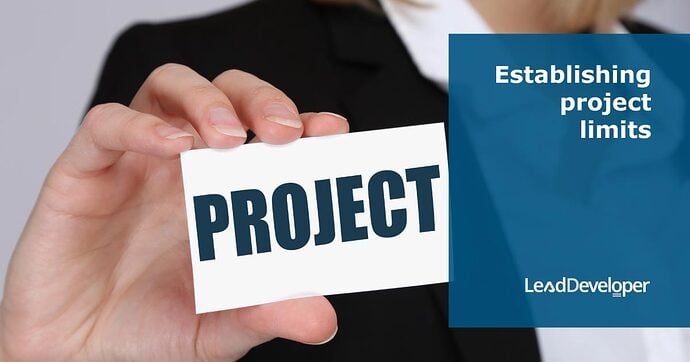Establishing Project Limits
This article dives into the essential aspects of real estate development, focusing on how various constraints, such as legal, environmental, and market factors, define the boundaries of a project. It outlines the criteria for determining a property’s highest and best use, emphasising the importance of legal permissibility, physical possibility, financial feasibility, and maximising productivity to achieve optimal development outcomes.
Development Constraints
Identifies financial feasibility impacts due to physical, legal, contractual, political, environmental, and market timing constraints.
Project Limits
Emphasises the importance of addressing constraints to accurately conduct financial feasibility and determine development potential.
Highest Best Possible Use
Defined as the legal, reasonable, probable use of land that achieves the highest value, considering the physical possibility, financial feasibility, and maximum productivity.
Criteria
It must be legally permissible, physically possible, financially viable, and result in maximum productivity.
Developer’s Perspective
Focuses on maximising profit, establishing an income stream, market positioning, and deciding between developing to hold or sell.
Insights based on numbers
The concept of “Highest Best Possible Use” involves analysing a site’s potential under planning and zoning restrictions to maximise its utility and value. This analytical process is pivotal in real estate development, aiming to identify the optimal mix of residential, commercial, or mixed-use developments that are legally permissible, financially viable, and physically possible.
Frequently Asked Questions
How do market timing and environmental constraints influence project feasibility?
The video highlights that market timing and environmental constraints are crucial factors in establishing project limits and assessing the financial feasibility of real estate developments. Market timing influences the demand for certain types of developments and their profitability. For example, launching a residential project during a market downturn could negatively impact its financial success. Similarly, environmental constraints, such as regulations aimed at protecting natural habitats or ensuring sustainable development, can limit the types and intensities of projects that can be developed in certain areas. These constraints must be carefully considered and addressed to accurately conduct financial feasibility studies and determine the development’s potential, ensuring that projects are both economically viable and environmentally responsible.
What role does financial viability play in determining the highest and best use of a property?
The video elucidates that financial viability plays a pivotal role in determining the highest and best use of a property. This concept revolves around identifying the most profitable, legally permissible, and physically possible use of land that results in the highest value. Financial viability is one of the four essential criteria for assessing the highest and best use, alongside legal permissibility, physical possibility, and maximum productivity. It ensures that the proposed use of the land or property is not only feasible from a construction and regulatory standpoint but also capable of yielding a significant return on investment. This financial aspect is critical, as it dictates whether a development project can attract the necessary funding and ultimately succeed in the market.
How do planning schemes and zoning regulations impact real estate development strategies?
The video explains that planning schemes and zoning regulations significantly impact real estate development strategies by defining what can be built on a site, where it can be built, and how it can be used. These regulations are designed to ensure that land use is optimally planned and managed, taking into consideration factors such as environmental protection, community needs, and infrastructure capacity. For developers, understanding and navigating these regulations is critical to identifying the highest and best use of a property. This involves analysing the site’s zoning classification, any overlays or special conditions that apply, and the potential restrictions on development types, densities, and heights. By aligning development proposals with planning schemes and zoning regulations, developers can maximise the site’s potential while adhering to legal requirements, ultimately influencing the feasibility, design, and profitability of development projects.
What are project limits in real estate development?
Project limits in real estate development refer to the boundaries defined by various constraints, such as legal, environmental, and market factors, which outline the scope and potential of a real estate project. These constraints determine how far a project can go in terms of development and what kind of developments are feasible within these boundaries.
What factors influence the establishment of project limits?
Several factors influence the establishment of project limits, including legal permissibility, physical possibility, financial feasibility, environmental considerations, contractual obligations, political circumstances, and market timing. These factors collectively define the framework within which a real estate development project can be conceptualised, planned, and executed.
What is meant by “Highest Best Possible Use” in the context of real estate development?
“Highest Best Possible Use” is a concept in real estate development that defines the most profitable, legal, and feasible use of a property. It is the use that results in the highest value for a property, considering its physical characteristics, legal constraints, financial viability, and potential to produce maximum productivity. This concept is fundamental in determining the optimal approach to developing a piece of land.
How do developers determine a property’s highest and best use?
Developers determine a property’s highest and best use by evaluating its legal permissibility, physical possibility, financial feasibility, and potential for maximum productivity. This involves a detailed analysis of zoning laws, the physical characteristics of the land, the costs associated with development, and the income or value that the developed property can generate.
What is the importance of financial feasibility in real estate development?
Financial feasibility is crucial in real estate development as it assesses whether the proposed development is economically viable. It involves analysing the costs of development against the potential returns. A project is considered financially feasible if the anticipated revenues or benefits outweigh the costs, ensuring that the project is profitable and sustainable in the long run.
Why do developers need to consider market positioning and the decision between developing to hold or sell?
Developers need to consider market positioning and the decision between developing to hold or sell because these considerations impact the strategy and profitability of a project. Market positioning involves identifying the optimal niche or segment for the project to target, while deciding whether to develop to hold or sell influences the project’s financial planning and long-term investment strategy. These decisions are based on market analysis, financial projections, and the developer’s business goals.
What role does analyzing numbers play in identifying the highest best possible use?
Analyzing numbers plays a critical role in identifying the highest and best possible use of a property by providing quantitative insights into the project’s viability. This involves assessing the financial implications of different development options, considering planning and zoning restrictions, and calculating potential returns. By analysing these numbers, developers can make informed decisions about the most profitable and feasible development approach for a property.
Test Your Knowledge
Multiple-Choice Questions on “Establishing Project Limits” in Real Estate Development
1. What primary factors define the project limits in real estate development?
A) Architectural design preferences
B) Legal, environmental, and market factors
C) Construction material costs
D) Historical value of the property
2. What is meant by the term “Highest Best Possible Use” in the context of real estate development?
A) The use that generates the highest number of residential units
B) The most environmentally sustainable use of land
C) The use that achieves the highest value, considering legal, physical, and financial factors
D) The use that preserves the land in its natural state
3. Which of the following is NOT a criteria for determining a property’s highest and best use?
A) Legally permissible
B) Physically possible
C) Culturally significant
D) Financially viable
4. How does financial feasibility impact real estate development?
A) It determines the project’s interior design themes
B) It influences the marketing strategies for selling the property
C) It assesses whether the anticipated revenues justify the development costs
D) It dictates the architectural style of the development
5. In the context of “Establishing Project Limits,” what does the developer’s perspective focus on?
A) Preserving historical landmarks
B) Maximizing profit and deciding between developing to hold or sell
C) Ensuring that all developments are residential
D) Following the latest architectural trends
6. Which of the following is NOT a constraint mentioned that defines project limits?
A) Legal constraints
B) Environmental constraints
C) Astrological constraints
D) Market timing constraints
7. Why is analysing numbers crucial in determining the highest best possible use?
A) It helps in choosing the project’s colour scheme
B) It provides insights into planning and zoning restrictions to maximise utility and value
C) It determines the project’s landscaping design
D) It influences the choice of construction materials
Answers:
- B) Legal, environmental, and market factors
- C) The use that achieves the highest value, considering legal, physical, and financial factors
- C) Culturally significant
- C) It assesses whether the anticipated revenues justify the development costs
- B) Maximizing profit and deciding between developing to hold or sell
- C) Astrological constraints
- B) It provides insights into planning and zoning restrictions to maximize utility and value
Assignment
Practical Exercise on “Establishing Project Limits” in Real Estate Development
Objective:
This exercise is designed to deepen your understanding of how to establish project limits in real estate development by analyzing various constraints and determining a property’s highest and best use. You will apply concepts related to legal permissibility, physical possibility, financial feasibility, and maximizing productivity.
Instructions:
Complete the following tasks and questions based on the provided article. Use real or hypothetical properties for your analysis. Document your findings and reasoning in a detailed report.
Part 1: Understanding Project Limits
Research and Analysis:
Select a real or hypothetical piece of land for a potential development project.
Research the local zoning laws and environmental regulations that apply to your selected property.
To Do:
Summarise the legal constraints that would influence the development of the property.
Evaluate the physical characteristics of the property (e.g., terrain, accessibility, size) and how they might limit development options.
Part 2: Identifying Development Constraints
To Do:
Identify potential environmental constraints (e.g., protected habitats, flood zones) that could impact the development.
Discuss how market timing might affect the financial feasibility of the project.
Research Questions:
What contractual or political factors could limit development on your chosen property?
How might these constraints influence the project’s scope and financial viability?
Part 3: Determining the Highest Best Possible Use
Analysis:
Using the information gathered, analyse the property’s potential uses within the framework of legal permissibility, physical possibility, financial viability, and productivity maximisation.
To Do:
Propose three potential uses for the property and justify why each could be considered its highest possible use.
Calculate a rough estimate of financial feasibility for each proposed use (consider development costs, potential revenue, and market demand).
Part 4: Developer’s Perspective
To Do:
Decide whether you would develop the property to hold (for rental income or long-term value appreciation) or to sell immediately after development. Justify your decision based on market positioning.
Outline a strategy for maximising profit from the chosen development approach.
Part 5: Reflection
Reflective Questions:
How do the concepts of project limits and the highest best possible use influence decision-making in real estate development?
Discuss the importance of analysing numbers and conducting thorough research in the planning phase of a development project.
Submission:
- Compile your findings, analyses, and reflections into a comprehensive report. Ensure that your report clearly demonstrates your understanding of how to establish project limits and determine a property’s highest and best use, supported by real-world considerations and financial analysis.



